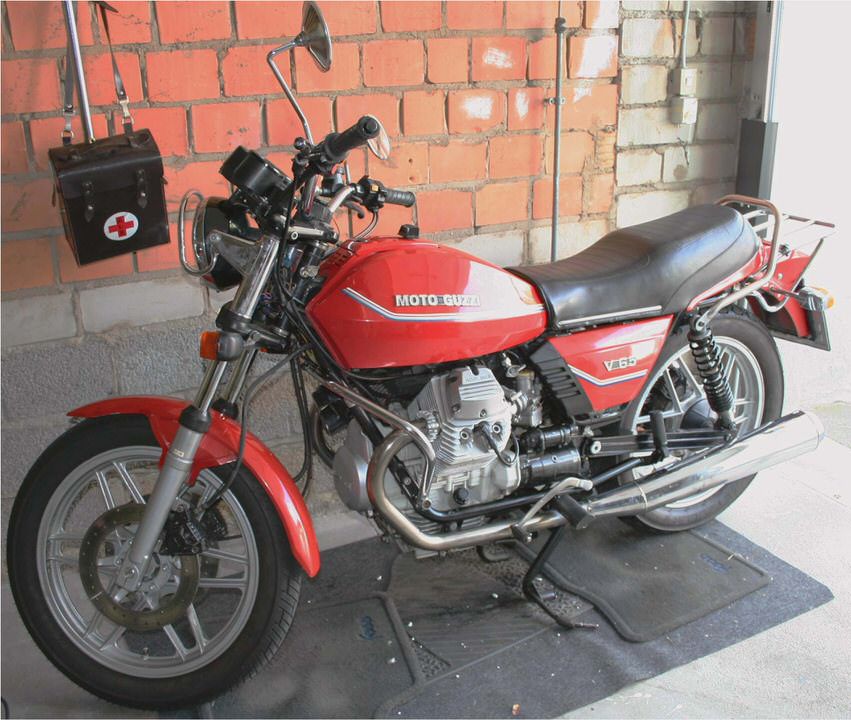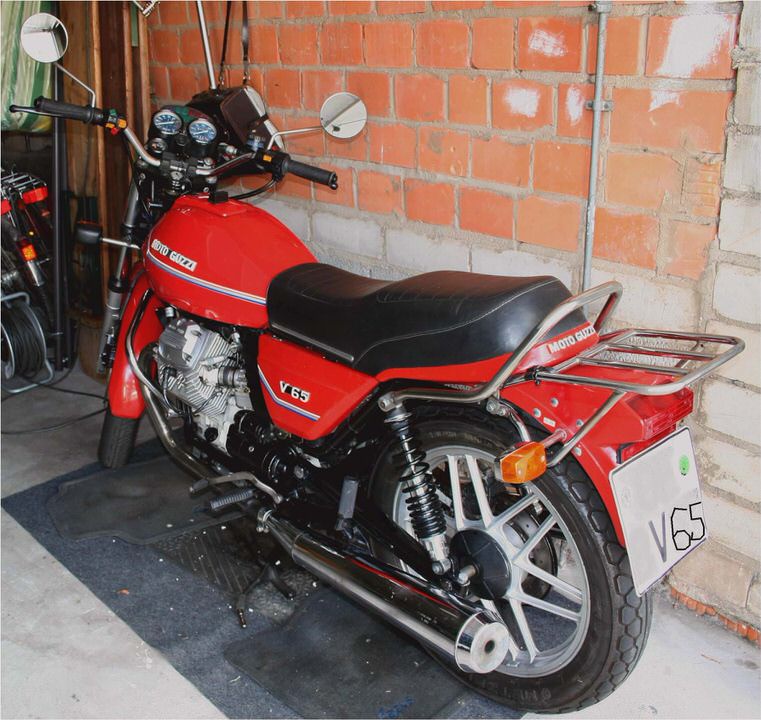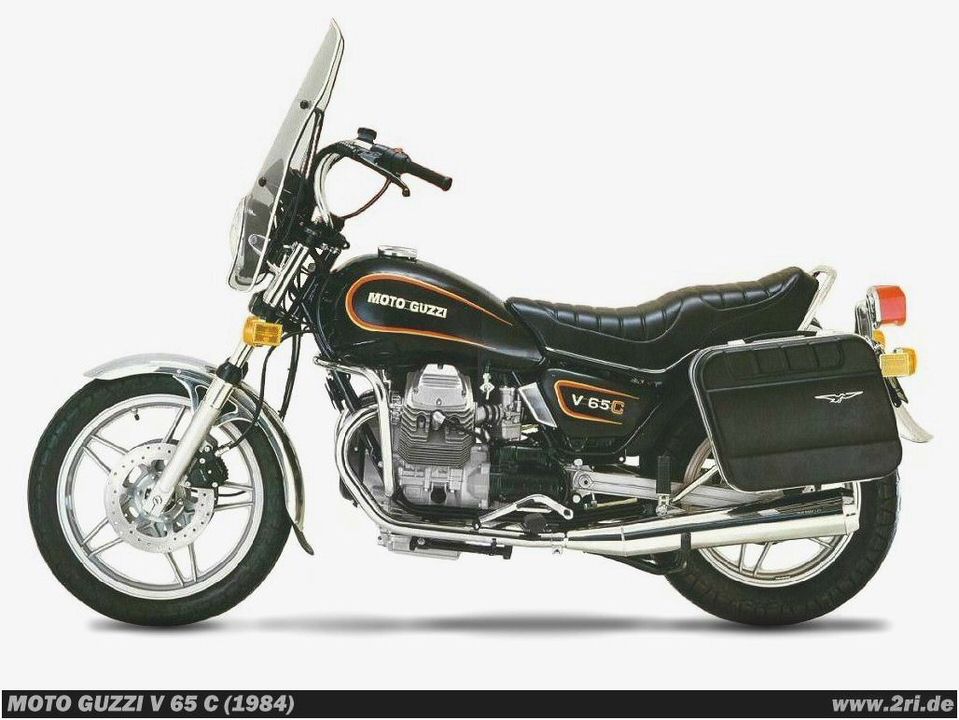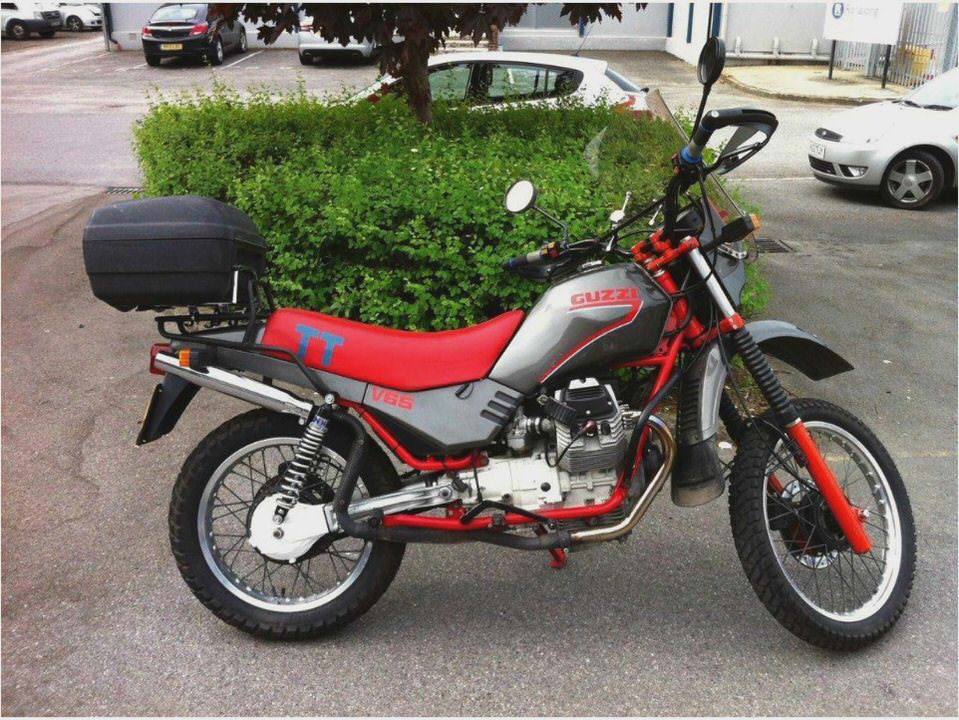
Related Content
1982 Ducati 900 Mike Hailwood Replica
A 1982 Ducati 900 Mike Hailwood Replica at the National Motorcycle Museum in Anamosa, Iowa.
Norton Motorcycles unveils its 2012 TT contender
Norton Motorcycles has announced the factory’s intent to compete in the 2012 Isle of Man TT Senior r.
3rd Annual Martin Motorsports Modern Classics Show
Highlights from the third annual Modern Classics show at Martin Motorsports in Boyertown, Pa.
Found on eBay: 1978 Ducati 900SS
Years produced: 1979-1985
Number produced: 7,169
Claimed power: 63hp @ 7,400rpm (1982)
Top speed: 130mph (est.)
Engine type: 864cc desmodromic SOHC air-cooled V-twin
Weight (dry): 463lb (210kg)
Price then: $6,400 (approx.)
Price now: $8,000-$20,000
MPG: 40-50 (est.)
Hollywood could never have written a better script. And who knows — with the success of The World’s Fastest Indian . they might just make the movie of “Mike the Bike” Hailwood and his 1978 Isle of Man TT comeback triumph. If not, at least the Ducati MHR allows you to look a little like Hailwood when you’re crusing down the street.
Mike Hailwood, one of the most celebrated racers of all time, was effectively pushed out of top-level motorcycle racing in 1968 when Honda ended its involvement in GP and then enforced a no-compete clause in Hailwood’s contract to make sure he didn’t ride for anyone else.
So “Mike the Bike” became a car guy, racing in 4-wheeled Formula One for Reg Parnell, John Surtees and Bruce McLaren. He quit in 1974 after badly injuring a foot in a crash at the Nürburgring. In 1978, then living in New Zealand and bored with retirement, Hailwood let it be known he might ride again.
But why would any racing team, even the small-time Sports Motor Cycles operation based in Manchester, England, want to hire a superannuated rider with a gammy foot and a noticeable paunch who hadn’t twisted a grip competitively in 11 years? Good question.
Read Alan Cathcart’s experience of road testing Mike Hailwood’s original Ducati 900TT1
Stanley Michael Bailey Hailwood was born in 1940 into a motorcycle family. His father was a partner in a successful chain of motorcycle stores and was himself a talented rider — though he chose to race cars instead. Young Hailwood started on bikes early, and entered his first race at age 17.
And though his father’s deep pockets meant he never lacked for machines to ride, Hailwood’s precocious talent was obvious from the start. In his first visit to the Isle of Man in 1958, he entered in all four solo classes: the Ultra-Lightweight (125cc), Lightweight (250cc), Junior (350cc) and Senior (500cc). His worst finish was 13th in the Senior, and he finished third in the 250cc race behind Carlo Ubbiali and Tarquino Provini.
By the end of the season, Hailwood was British champion in three classes, fourth in the world 250cc championship and sixth in the 350cc class. He’d won 74 races and set 38 new lap or race records. He was 18 years old.
1961 was a banner year. At the Isle of Man he won the 125cc and 250cc races on Hondas (Honda’s first-ever Isle of Man wins), then rode a Manx Norton to first place in the 500cc event. By year’s end he was 250cc World Champion on the Honda four. Hailwood signed with MV Agusta in 1962, winning four straight 500cc world championships.
Returning to Honda, he won the 250cc and 350cc world championships in both 1966 and 1967.
But it was probably Hailwood’s outstanding success on the Island that won him his comeback seat in the 1978 Formula One race. As well as the 1961 hat trick, Hailwood won nine more TT titles: the 1962 Junior; 1963, 1964 and 1965 Senior;1966 Lightweight and Senior; and in 1967 he swept the Lightweight, Junior and Senior.
The 1978 Isle of Man TT
Although Hailwood had been away from motorcycle racing for 11 years, he was still “Mike the Bike,” a living legend. Within hours of the news early in 1978 that The Master was to ride a Ducati on the Island that year, every room rental and ferry berth was booked. An estimated 60,000 people — the most ever, before and since — would be on the Island to cheer on their hero.
Hailwood was on the sixth row, 50 seconds behind Phil Read. He caught and passed Tom Herron, who had also started ahead of him, and then set off after Read, catching him on the third lap.
They pitted together, but the Ducati was slower away, and it wasn’t until Ballacraine, a corner with a very fast approach and walls on both sides, that Hailwood caught Read again, this time passing him. Read’s Honda died trying to keep up, and he recorded a DNF. It seemed too good to be true: Our hero, banished from the Great Contest 11 years before, returns from the wilderness and vanquishes all — on a long-shot steed with a solid pedigree and a big heart.
It was an unlikely victory, but the kind you’d never want to bet against.
The Ducati Mike Hailwood Replica
In 1978, Ducati needed some good news. Squeezed out of the U.S. market by tariff barriers, the company sold just 4,436 machines that year. Ownership passed from one government-controlled body to another, and new proprietors VM Group had little interest in motorcycles.
Economics ruled, and racing was considered an expensive eccentricity. It seems impossible, given Ducati’s present business model, but racing development inside the factory effectively ceased.


But that’s not the Italian way. Chief racing mechanic Franco Farné teamed up with ex-factory race mechanics Giorgio Nepoti and Rino Caracchi of Scuderia NCR to create what was effectively a works race shop outside the factory. The NCR bikes used little from the production 900SS, and were essentially based on the earlier round-case 750SS engine.
In NCR trim, weight was shaved down to around 325 pounds, and the engines made between 90-105hp depending on capacity and specification.
After further modification by Steve Wynne at Sports Motor Cycles, Hailwood’s NCR Ducati emerged with Lucas-RITA ignition, 11:1 Venolia pistons, indexed cams and a new transmission. The resulting bike turned the scales at 365 pounds and produced 87hp at the rear wheel.
So Hailwood’s miracle victory owed little to the production 900SS of 1978, but it formed the basis of the Mike Hailwood Replica. First shown at the London motorcycle show in September 1978, the Ducati MHR was mostly a Ducati 900SS but fitted with a 1-piece fairing, fiberglass gas tank with unpainted fill-level stripe and a bum-stop seat. Side panels were omitted, and the bike wore Hailwood’s red-white-green colors over a red frame.
When the “production” Replica arrived in 1979, the glass gas tank had become a styled cover over a steel tank, and the seat had a removable cowl. The front cylinder exhaust was tucked in so tight to the engine, the header had to come off to check the oil level. Minor suspension, brake and equipment changes differentiated the MHR from the 900SS, as did 40mm Dell’Orto carburetors and Conti pipes.
Detail changes occurred from 1980-1982, with MHRs wearing side panels and a 2-piece fairing, and the fragile magnesium alloy wheels were replaced with aluminum. By 1982, the MHR was pretty much a 900SS with a bigger gas tank, extra bodywork and 40mm carbs.
In 1983, the MHR was updated, as was the 900SS, with an electric-start engine and a new frame, but the new bikes were heavier and no more powerful, so performance was under whelming by the standards of the day. The last chapter of the MHR story was the 1,000cc (actually 972cc) Mille of 1984, which used a big-bore version of the 900cc bevel engine with 90mm nickel/silicone-plated bores, a plain-bearing big end and full flow oil filtration via a spin-on filter.
The final version weighed in at 529 pounds (versus 444 pounds for the first 1979 MHR), but with just 76hp, it was badly outclassed in the performance stakes. Production of all the bevel-drive twins ended with Cagiva’s takeover of Ducati in 1985, and the last MHRs rolled out of the factory in early 1986.
George Spelvin’s Ducati MHR
George’s Ducati MHR is a 1982 model; but like many Ducatis of the late government-ownership era, the specification became something of a moving target — actual machines don’t necessarily match what was in the sales brochure. The 1982 MHR should have the 2-piece fairing and side covers, which it does. As a Canadian bike, it has the optional Conti mufflers (too loud for the U.S.) but with U.S.-spec side reflectors on the turn signals.
FPS aluminum wheels are correct too, having replaced the earlier Speedline or Campagnolo magnesium alloy bits.
With red and green paint over the red frame, and gold wheels, the Replica makes a stunning sight, and even if you don’t see it first, the bellow from the Conti pipes announces its arrival well in advance.
Riding Ducati’s bevel twin is a unique experience: the riding position is uncompromising, with a long reach over the tank to the clip-ons, and high foot pegs set way back below the solid seat. The cable clutch is he-man heavy, but the gear shift is quick and light. Accelerating through the gears creates a concerto of sound, the eager gasping of the 40mm open intakes set against the boom of the Conti pipes.
Feedback through the firm suspension and rigid frame is direct, and response to steering inputs instant, though requiring firm pressure.
The Ducati loves to lope through long sweepers, holding its line perfectly in spite of surface imperfections, and feels remarkably stable in a straight line. And while its gearing gives it long legs, the engine loves to rev, too. Just as well, because that booming, on-song Ducati sound becomes addictive.
It’s a motorcycle that responds to enthusiastic and assertive piloting, and rewards the rider with a feeling of being wholly involved. This is a true rider’s motorcycle — I’ve never ridden anything else quite like it.
Sadly, Hailwood didn’t live as long as the bike he gave his name to. On March 21, 1981, driving with his daughter and son near his home in England, a truck made an illegal turn into his path. His daughter, Michelle, was killed instantly. Mike died in hospital two days later.
He was just 40.
Resources:



- The Vintage Moto Guzzi V7 750 “Very Special” DocuBlog Life´s too short…
- Moto Guzzi Sport 1100
- 2009 Moto Guzzi California Vintage Review The Smoking Tire
- Piaggio India Already Sells Range Of Aprilia Moto Guzzi Bikes
- Moto Guzzi 1951 – 30 years anniversary book – NEW! R (08/31/2008)…

